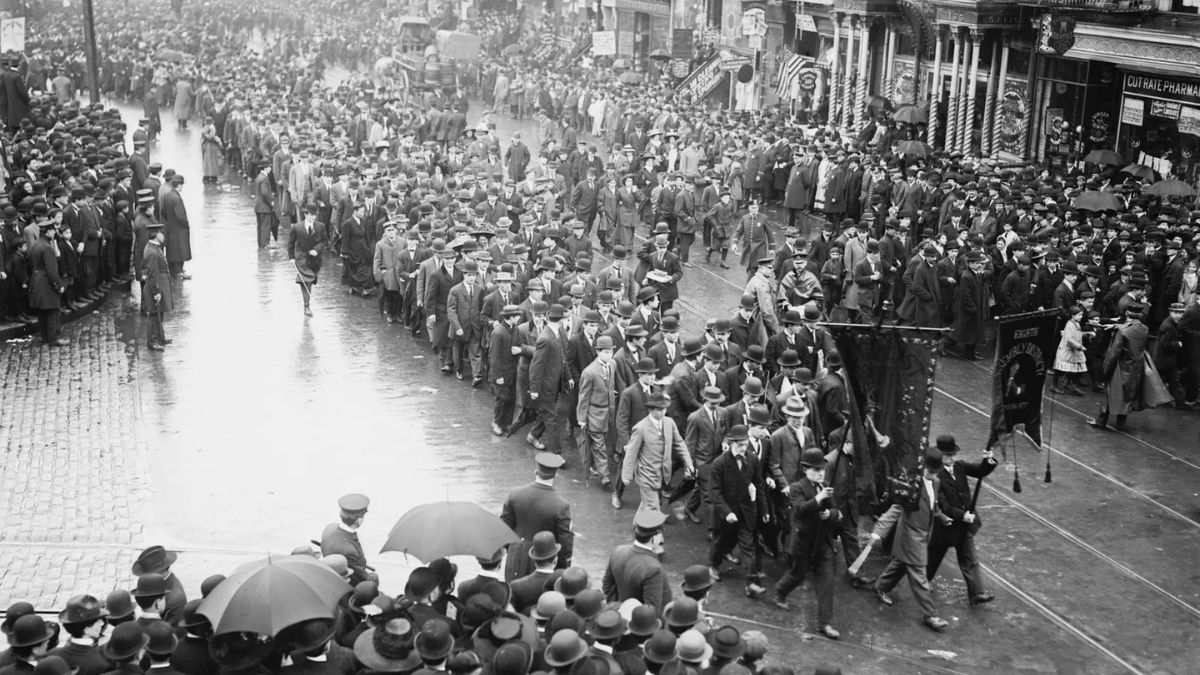On May 1, 1889, May Day, which had earlier been an event to welcome spring, was celebrated for the first time as a labour holiday. This change was made by the International Socialist Congress. In the United States and Canada, a similar day is held on the first Monday of September and is called Labour Day.
Also, on this day in 1931, the Empire State Building was officially opened in New York City. It remained the tallest building in the world for the next forty years.
Meanwhile, in 1840, the first adhesive postage stamp in the world, the Penny Black, was used in a public postal system. It showed a side view of Queen Victoria.
If you are a history geek who loves to learn about important events from the past, Firstpost Explainers’ ongoing series, History Today , will be your one-stop destination to explore key events.
Let’s take a look at these events in detail:
May Day is founded
May Day honours the historic efforts and progress made by workers and the labour movement. It is observed in many countries on May 1.
On this day in 1889, an international group of socialist organisations and trade unions chose May 1 as a day to support workers. This was in memory of the Haymarket Riot in Chicago (1886), where a bomb blast killed seven police officers and at least four civilians.
Five years later, US President Grover Cleveland, concerned about the socialist link to Workers’ Day, passed a law to make Labor Day an official holiday in the United States. However, some states were already observing it on the first Monday of September.
Impact Shorts
More ShortsSince then, Labour Day has become a worldwide event. Millions join marches, rallies and other activities to recognise workers’ roles and call for their rights.
In many countries, Labour Day is a national holiday. In India, the first Labour Day event was held in Chennai (then called Madras) in 1923 by the Labour Kisan Party of Hindustan.
Two gatherings took place, one at Triplicane Beach and the other near the Madras High Court. At these meetings, a resolution was passed asking the British government to declare May 1 a Labour Day and a public holiday.
Empire State Building is officially opened
On May 1, 1931, US President Herbert Hoover officially dedicated the Empire State Building in New York City.
The building was completed in just over a year. It came in under budget at $40 million and was finished well ahead of schedule. At certain times during construction, the frame rose at a rate of four-and-a-half storeys each week.
John J Raskob and Al Smith were the key figures behind the project.
When it was completed, the Empire State Building had 102 storeys and stood at 1,250 feet tall (1,454 feet including the lightning rod). It was the tallest skyscraper in the world at the time.
During the Great Depression, the project gave work to up to 3,400 people a day. Most of them earned good wages, especially considering the hard economic times.
The Empire State Building has also been praised for its efforts in energy conservation. In 2020, it finished a renovation that cut energy use, lowered emissions by around 40 per cent, and improved efficiency.
In 1972, the World Trade Center in New York became the new tallest building, though it only held the title for a short time. Today, that honour goes to the Burj Khalifa in Dubai, which reaches 2,716 feet.
World’s first postage stamp was issued
The Penny Black was the first adhesive postage stamp used in a public postal system. It was first issued in the United Kingdom on May 1, 1840, but could not be used until May 6.
Before this, in 1837, postal charges in Britain were high, confusing, and often unfair. To make things easier, Sir Rowland Hill suggested using a stamp to show that postage had been paid in advance.
At the time, it was common for the person receiving a letter to pay for it. The cost was based on how many sheets were sent and how far the letter had to travel.
With the Penny Black, people could send letters weighing up to 14g for a fixed cost of one penny, no matter how far they were going.
Hill chose a simple design that featured the profile of Queen Victoria. He picked black ink for the stamp, which led to its name, the Penny Black.
Because they were the first stamps ever made, the Penny Black and the Twopenny Blue did not show the name of the country. Even today, British stamps do not include the country name.
Like the first stamps, they always feature a picture of the current monarch.
This Day, That Year
1851: The Great Exhibition began in London inside the Crystal Palace, which was designed by Sir Joseph Paxton.
1941: ‘Citizen Kane’, directed by Orson Welles and widely regarded as one of the greatest films ever made, had its premiere in New York City.
1960: The Indian state of Maharashtra was formed based on cultural and language differences.
1961: Harper Lee won the Pulitzer Prize for her well-known novel ‘To Kill a Mockingbird’.
1961: The first major hijacking of a plane in the United States took place when a man forced a flight from Miami to Key West to change course and fly to Cuba.
1963: Jim Whittaker, alongside Sherpa climber Nawang Gombu, became the first American to reach the summit of Mount Everest.
2004: The European Union welcomed 10 new member countries - Cyprus, the Czech Republic, Estonia, Hungary, Latvia, Lithuania, Malta, Poland, Slovakia, and Slovenia.


)

)
)
)
)
)
)
)
)



